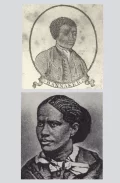Blog Post
The Haunting Legacy of Hair Discrimination Under Slavery
The Haunting Legacy of Hair Discrimination Under Slavery
In the earliest, most brutal years of American slavery, the basic humanity of enslaved Africans was disregarded in every way – including their hair care needs. With a disposable supply of captives constantly shipped in, their health and hygiene was an afterthought.
Ringworm outbreaks ran rampant, with enslaved women forced to tie rags around their scalps that worsened the sores and irritation. On some plantations, they were barred from wearing anything but dehumanizing head coverings.
This was codified into law in French colonial Louisiana in 1786 with the notorious Tignon Laws. All Black women – enslaved or free – had to wear tignon headscarves to make them appear “unattractive” to white men. While free women of color found ways to adorn their tignons defiantly, the law’s intent was to systematically strip them of their dignity.
Even after the Tignon Laws ended with the Louisiana Purchase in 1803, the damage had been done. Head wraps and coverings on Black women became associated with a “lower class” lasting well into modern times.
The realities of slavery made proper hair care nearly impossible. Light-skinned, mixed-race women in household roles faced pressure to keep their hair “neat,” using harsh chemical products like kerosene and animal fat that caused immense damage. Field hands resorted to binding hair tightly, leading to rough, unkempt textures.
This created the insidious “good hair” vs “bad hair” myth that still lingers today. The daughters of white slave owners, a living embodiment of rape and exploitation, had looser, softer hair textures that were privileged over the tight coils and kinks of their enslaved cousins.

Hair care deprivation under slavery gave rise to deep-rooted discrimination that still manifests through myths about Black hair types, textures and styles being “unprofessional” or “unkempt.” Our ancestors’ struggles did not erase their self-worth, but echo still in the way we talk about our crowns.

